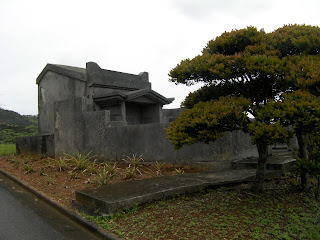Hokkaido is know for a lot of stuff after all.
But the thing I like best?
Ramen.
Ramen.
Ramen.
When I say Ramen, I ain't talkin' bout those cheap noodles you buy for 10 cents a pack, the sort of thing college students live off of. Nope nope. Ramen is a soup noodle indeed, but a gourmet legacy of pure Japanese idealism; taking established ideas from other cultures and tweaking, augmenting them. The result is just unique to Japan, and completely utterly perfect in it's composition of simplicity and complexity. I mean, soup noodles, how different could they be?
Very.
There's a lot of good soup noodles around Japan. But, in my humble opinion, they just don't come close to Sapporo.
Sorry guys, I know you all thought Tokyo just ruled the Japan world in terms of everything. Wrong-o.
In fact, a fair amount of people agree. Two of the top ramen shops according to the website tabelog in the entire country are located in Sapporo. Just Sapporo.
Of them, I have been to the best one in Hokkaido, #4 in the country. And here's what I have to say about it.
Now, before I begin, yes it's true: I did a vlog a while ago about Ramen in Sapporo. But good lord, did I know so little of the possibilities that existed. The shops I had visited before pale in comparison in all ways to these legendary ramen gossip machines that top the charts.
Sumire, Junren, Ramen Yoshi, Akaboshi, just to name a few. Restaurants that are packed, talked about through the word of mouth of individuals. Yes I am name dropping here. Ugh. But what about the top rated ramen shop in Hokkaido? Number Four in the country?
The NAME, is 麺 eiji. Noodle Infant. Bahahaha.
This tinsy tiny shop is located in the "Hiragishi" district of Sapporo, which is a good 20 minute train ride from the Sapporo Station.
Indeed, there ain't much goin' on here. But it's still fairly busy
There's one thing you notice as soon as you walk in though. Not the small size (about 8 seats), or how the shop was completely full just 10 minutes into service. Nope, none of those things.
Everything is pink. Everything. The counter wood is a light shade of pink, the walls, the seats. Everything is in a shade of pink. You'll have to mind my lame iphone camera though.
Even the chopstick holders and napkin boxes.
So... pink huh? I assume this is because the word "Eiji" can mean infant, though I really have no idea. Yes I translated it that way earlier, but the word "Eiji" on the sign is written in Roman characters, so the meaning is truly unknown. But the place is pink. Well... can't let that scare me. Off we go.
Like many Ramen shops, both popular and not, you order with a vending machine style device. Insert your money, push the appropriate button for the type of ramen you want, and a ticket comes out. You hand said ticket to the cooks, they make your food, and you're good to go. Slurp your noodles, enjoy your meal, and no tip or extra cash to pay.
I had trouble deciding. The top button says "most popular", and it was a seafood pork bone broth soup. Which by all means sounds totally delicious, but I love miso ramen far more. Still, it's hard to pass up a recommendation, so I stood in front of the machine playing it out in my head. Of course, because I am foreign, they assumed that my "staring at the ticket machine not buying" status meant I was illiterate. Sigh. That's another story entirely.
So I caved and purchased the recommendation. 850 yen. This is what came.
Omggggggg
There's a lot of good to say about this bowl of noodles. It comes with raw diced onions, long onions, hand made noodles, slow roasted pork, and that dark orange jelly like stuff, collagen. The broth is rich but not overly thick. The noodles are house hand made, which like any restaurant that sells noodles, is rare, and they are perfect, slightly eggy, just cooked right. The pork is tender, but not totally fall apart mushy like some, it's maintained it's texture. The raw onions are sharp, kind of a nice bite in comparison to the smooth mellow soup. It brings thoughts of gravy to be honest.
That dark collagen, which tastes like pork essence, slowly melts into the soup, making it even richer and delivering a crazy mouth feel.
In a word, it's a very very good bowl of noodles. I can easily see why it has the #1 spot.
But do I really think it's the best bowl of ramen in Hokkaido?
I'm not sure.
I mean, it's legitimately expensive. 850 for a bowl with no egg or extra meat is expensive. And this wasn't even the most expensive one on the menu, some dishes are more than 1000 yen. At places like Akaboshi, which is also a top 10 ramen joint, 500 yen gets you ramen, and for an extra 50 yen, special sliced roasted chicken on top. Egg is included in the 500 yen price.
But I guess my biggest nag is just the flavor. The most popular flavor isn't miso? Which was invented in Sapporo? This doesn't make sense to me! Why aren't people begging for Miso? Is their miso subpar or something?
The thing is it's actually a trend in ramen shops period. Quite a few of the top ramen shops sell a variation of this pork seafood broth as their main style.
Which I don't totally like.
Some people just won't enjoy this result. It's very... 濃い. Rich. thick. Can't translate that word well, but that's what it is I say!
But I think it's worth checking out at least once.































